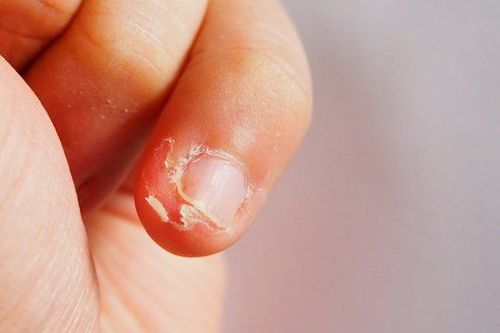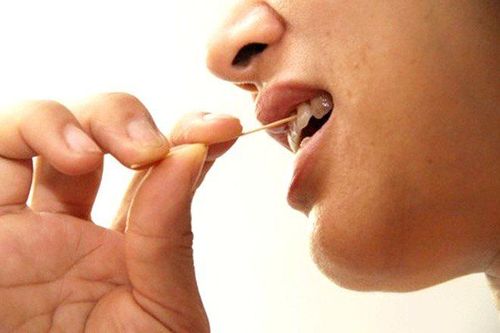This is an automatically translated article.
In young children, nail and toenail diseases such as cracked, ingrown, inflamed,... are very common. In particular, the condition of children often breaking nails can be a warning sign of some health problems of the baby.
1. The development of baby's fingernails and toenails
Normally, each day nails grow about 1/10 mm. The foot hook has a growth rate of 1⁄3 or 1⁄2 of the growth rate of a fingernail. If you have the disease, the blood flow to your hands and feet will slow down, slowing down nail growth.
2. Why do children often break their nails?
Children with broken nails is not an uncommon condition. So why or broken nails? If the baby's nails are soft, easy to bend, look very thin and break easily, it can be due to 2 reasons:
2.1 The child is deficient in vitamin A, vitamin B6, vitamin C and vitamin D At this time, parents Should change the child's diet to help the baby's nails strong and strengthen the baby's resistance. Specifically, parents should give their children a variety of fruits and vegetables that are dark green, have soft leaves, and have few veins. At the same time, when preparing vegetables for children, parents should cook soup or steam, boil instead of stir-frying because the stir-frying method will cause food to lose nutrients, making it difficult for children to absorb micronutrients.
To provide adequate vitamin D for children, parents should let children sunbathe every day in a cool time, combined with increasing the intake of foods with high vitamin D content such as eggs, green vegetables, etc. ..
2.2 Children frequently exposed to chemicals The condition of children's nails brittle may be due to frequent contact with water, strong soaps or chemicals. To prevent this problem, parents can apply hand cream for the baby, and at the same time limit the child's play, excessive contact with water, soap, ...
3. Some other common problems on children's nails
Children often broken nails is just a small problem. There are many other health signs that can manifest through the baby's fingernails that parents should pay attention to:
Small white spots on nails: Usually appear after children have minor injuries to their nails. This small white spot can last for weeks to months and usually goes away on its own; Nails turning black after trauma: Black or purple-black coloration on a baby's fingernails after an injury is usually caused by a blood clot under the nail and this should go away as the wound heals; Black, brown or purple under the nail without trauma: Possibly melanoma; Nails have many thin, light, even stripes: May be due to a lack of iron and zinc in children. At this time, parents should change the child's diet, giving priority to foods rich in iron and zinc; The skin around the nail is peeling, which may be swollen, red: Due to a lack of vitamin B3 or zinc, tryptophan in children. Advice for parents is to add foods rich in these micronutrients to their baby's diet; Ingrown toenails: Usually due to improper nail clipping, wearing tight shoes (with toenails), or genetics. Ingrown nails can puncture the surrounding skin, causing pain, swelling, and even infection. In rare cases, there may be festering, abscesses under the nail; The nail has a light part, a dark part, the tip of the nail is dark and the bottom of the nail is opaque: It is a warning sign of the risk of malnutrition. Parents observe the child's condition, if the child is thin, anorexic, pale skin, they should take the child to a nutritionist; The nail is pulled from the foundation: The nail will grow back very slowly, about 6 months (nail) or 18 months (toenail); Fungal nail infection.

Trẻ hay bị gãy móng tay có thể do một số bệnh lý gây ra
4. Secrets of nail care for children
To prevent children from breaking nails, fungal infections, peeling skin, ... parents need to pay attention to properly care for their children's nails as follows:
Choose the time to cut your baby's nails: Time to cut Children's nails are best after a bath because at this time the nails are soft and easier to cut. In addition, parents can also cut the child's nails when the baby is fast asleep because at this time the child's hands will be completely relaxed; Hold children's hands tightly when cutting nails: When cutting nails, it is advisable to hold children's hands tightly to avoid injuring them. If the edge of the nail is sharp or too long, use a small file to smooth it out; Avoid biting your child's nails: Some parents often use nail biting for their children instead of clipping them with staples. However, this is not recommended because it will increase the risk of bacteria from the mouth entering the small cuts on the child's hands that may not be noticed by the parents, easily making the child sick or infected. A child's nail problems are not dangerous, but they can be upsetting. Children who often break nails also warn of the risk that they are deficient in substances or have inappropriate living habits. Therefore, if a child has this problem, parents need to carefully observe the child's health status, and adjust their living and eating habits to help them stay healthy.













